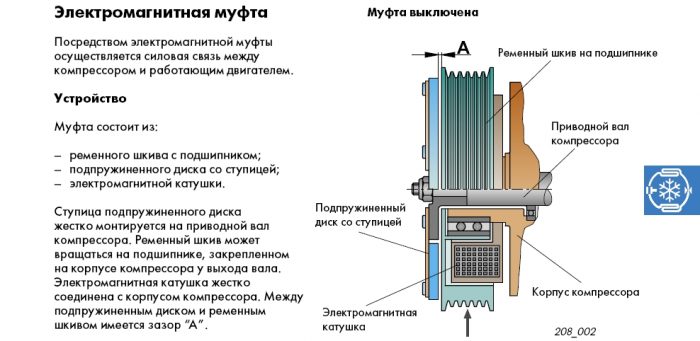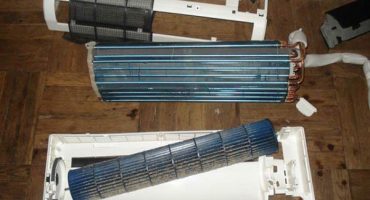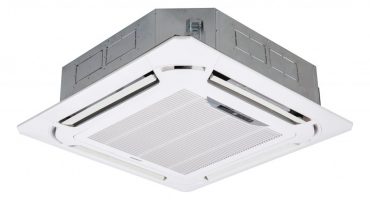- What is air conditioning? Air conditioner classification
- How is air conditioning
- The principle of operation of a domestic air conditioner
- Dimensions of the indoor unit
- Instrument Operation Modes
- How air conditioning works on heat
- How to use air conditioning in an apartment
- Setting the air conditioner
- How to turn off and restart the air conditioner
- Instrument disassembly
- Drainage mode in the air conditioner
- Ventilation mode in the air conditioner
- Anion generator in the air conditioner what is it?
- Air conditioning filtration system
- Air conditioner efficiency
- Where is the air conditioner fuse
- Air conditioning: its advantages and disadvantages
- Can I control the air conditioning from the phone?
- Comparative characteristics of the most popular models of air conditioners
- How to choose a conditioner for a house by its area
- Power conditioner for air conditioner
- Air conditioning in the car
Buying air conditioning is not a problem. But the choice of an air conditioner is a serious matter: you need to carefully monitor the market, read reviews on interested models, and weigh financial possibilities. In general, approach the issue with all responsibility.
What is air conditioning? Air conditioner classification
Air conditioning - a device that maintains a balanced temperature microclimate in the house, purifying the air from negative inclusions. Its main purpose is to reduce the temperature in the house in the summer heat, or, conversely, raise it in cold weather.
There are three types of devices:
- industrial;
- semi-industrial;
- household.
Industrial air conditioners
Industrial high power systems, they are installed on large facilities. They are operated continuously and without interruption.
Types of industrial ventilation systems:
- Multizone - up to thirty internal ones can be connected to the outdoor unit. Each indoor unit can operate in its own parameters. You will find such systems in hotels, shopping and entertainment centers, their efficiency is as high as possible. Following the emergence of multisystems on the market, refnet-splitters appeared. Refnet is a connecting device that is used in pipes of climate systems. The splitter is designed in such a way that when moving through the pipeline, freon does not meet any resistance. Due to this, noise pollution is significantly reduced. Streams are distributed evenly across all indoor units, regardless of distance. Splitters come in different sizes, which are written on the label of each, to avoid connection errors. Thanks to the convenient design of refnets, installation of any complexity has ceased to be a problem.
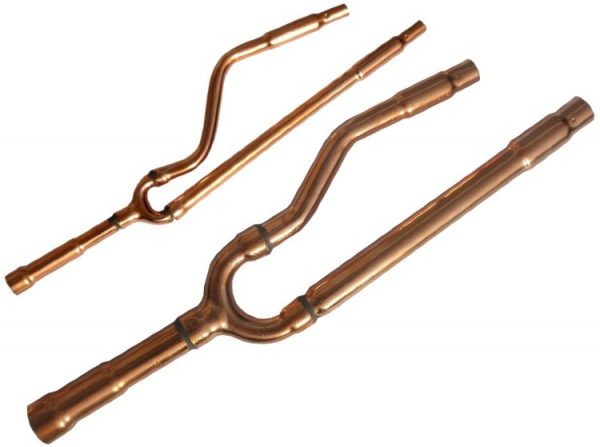
Reflectors-splitters of different sizes
Central. It consists of sections that cool, heat, purify and moisturize the air. They need a chiller or a freon unit.
- Roof Monoblock, which is installed on the roof of the room.
- Cupboard, precision. It is installed in the room, made in the form of a floor-mounted candy bar.
Semi-industrial and domestic air conditioners
Semi-industrial and domestic systems are used in apartments, cottages and office premises of medium size.
In European hotels, air conditioning systems with ejection closers that are installed under the windows of the premises are widespread. Ejector closers do not have moving parts. Air comes from fan of the main air conditionergets into the camera with nozzles. Leaving the nozzle, the primary stream ejects the stream from the building.After the mixed air goes through the heat exchangers and enters the building.
Due to the absence of moving parts, there is no noise from the fan; heating systems are reliable and durable. Ejection closers are connected to the air ducts with hoses with a circumference of 10 cm.
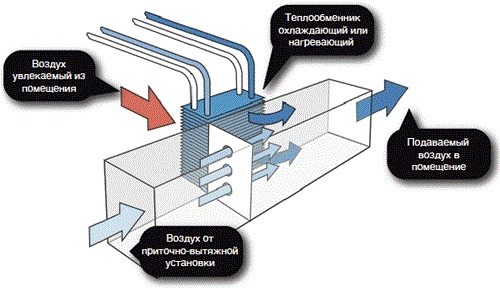
Work of ejector closers
Semi-industrial and domestic air conditioners - what are they:
- monoblock - represent a single building;
- split systems - they are represented by external and internal blocks that connect the electrical cable and copper tube;
- multi split systems - an external unit can connect up to 5 internal ones.
Monoblock conditioners are:
- Mobile does not require installation of a specialist. To install it, it is enough to independently bring the duct into the window.
- Window independently installed in a window or wall.
Split systems are divided into:
- wall-mounted air conditioners - the indoor unit is placed at the top of the wall, the external - on the street side of the wall, under the window;
- channel - the indoor unit is mounted in the inter-ceiling space;
- cassette air conditioners - are placed in a niche of a suspended ceiling, only a decorative lattice is visible;
- floor-to-ceiling devices - are installed at the bottom of the wall or on the ceiling;
- columned - they look like a refrigerator, heavy and bulky devices.
In apartments, wall split systems are most often installed.
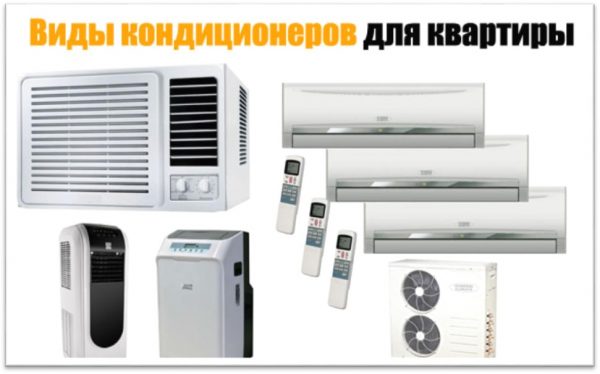
Types of air conditioners for an apartment
How is air conditioning
The air conditioner operates on the principle of evaporation and condensation. It is a closed loop with a coolant inside.
The main components of the device:
- outdoor unit;
- indoor unit.
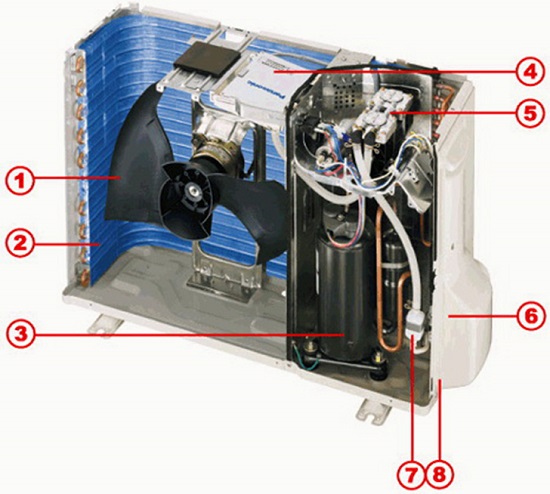
Outdoor unit
What the outdoor unit of the air conditioner consists of:
- Fan. Its task is to blow around the internal parts.
- Radiator-condenser, freon is cooled in it.
- The compressor is responsible for compressing the freon and its circulation between the blocks.
- The electronic control board is located only on inverter systems, the rest is located inside.
- The valve is installed only on models with the "heat / cold" function.
- A cover that protects the fittings.
- The filter catches foreign particles, protecting the system from penetration.
- Body.
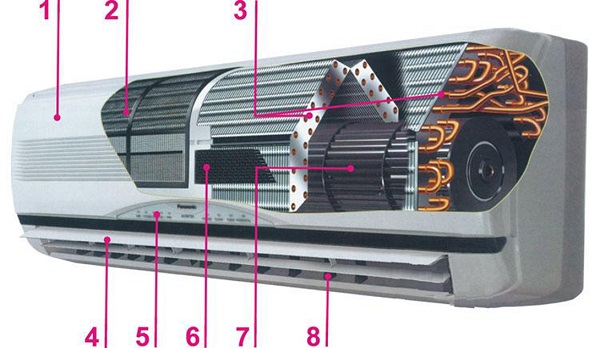
Indoor unit
What the internal block consists of:
- A protective plastic grill allows air to enter the device.
- The filter delays large fractions of negative inclusions. It must be cleaned periodically.
- The evaporator cools the air before it "arrives" in the apartment.
- Horizontal blinds direct air flow evenly over the entire area.
- Informative panel with indicators.
- A delicate cleaning system consisting of a carbon filter that traps odors, fine dust, etc.
- Due to the fan, there is continuous air circulation in the room.
- Vertical blinds regulate the flow of air.
The external and internal units are two pillars of all air conditioners, the rest of the components can vary depending on the model.
The principle of operation of a domestic air conditioner
The main components of the device:
- compressor - is responsible for compressing freon and its circulation in a closed system;
- the capacitor is responsible for the condensation process;
- the evaporator transfers the refrigerant from liquid to gaseous;
- a thermostatic expansion valve reduces the pressure of the coolant before it enters the evaporator;
- fans - blow the evaporator and condenser with air currents.
A closed cooling circuit is formed of a compressor, condenser, valve and evaporator, interconnected by copper tubes. A coolant circulates inside the circuit with part of the compressor oil.
The operation of the air conditioner is such a process:
- Freon in the form of gas enters the compressor from the evaporator with a temperature of 10-20 degrees.
- The compressor compresses the gas, which increases its temperature to 70-90 degrees and follows the condenser.
- In the condenser, the substance cools and becomes liquid, while generating heat.Leaving their condenser, liquid freon has a temperature of 10-20 above the external temperature.
- From the condenser, freon enters the thermostatic valve and cools in it, evaporating.
- A mixture of liquid and gaseous freon enters the evaporator, passing into a gaseous state, choosing heat from the air. As a result, the air in the room is cooled.
- Gaseous freon enters the compressor, and this cycle repeats endlessly.
This cycle is the basis of any air conditioner, regardless of its model. In the heat / cold devices, an additional four-way valve is installed, which changes the direction of the freon path, and swaps the evaporator with condenser. In this case, the indoor unit heats the room air, and the outdoor unit cools.
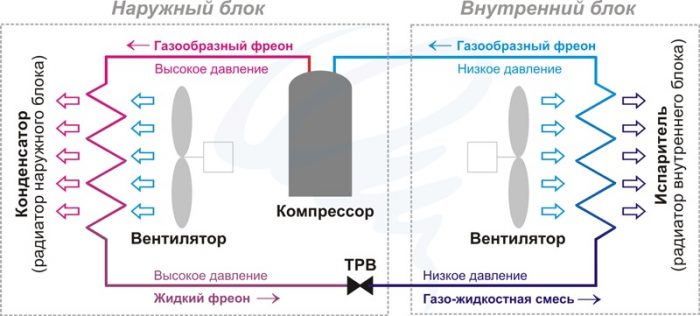
The scheme of the device
Dimensions of the indoor unit
As a rule, the size of the indoor unit of the air conditioner is directly proportional to the size of the heat exchanger. The smaller their size, the lower the productivity.
The indoor unit of the unit is selected based on the area and free space of the room.
Dimensions of the indoor unit are concepts:
- height;
- width;
- depth.
The height of the device can be from 24 to 32 cm, width from 70 to 120 cm, depth from 18 to 30 cm.
Some manufacturers produce powerful devices with small dimensions due to the increased fan speed. These devices are very noisy, which is unlikely to please users.
Recently, manufacturers have added originality to the design of parting, and produce indoor units of square, vertical and even angular type.
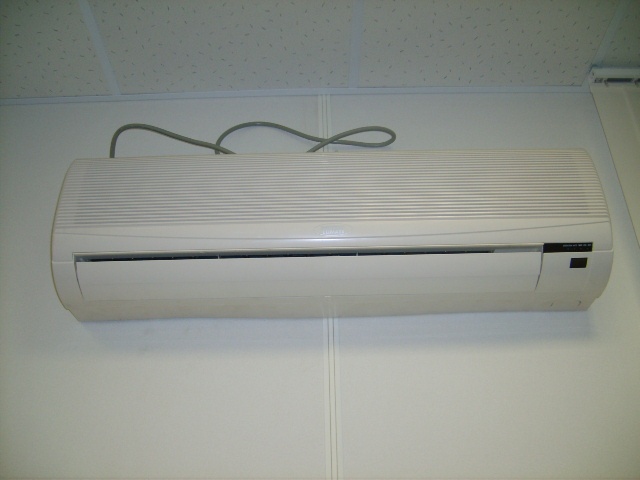
Indoor unit
Instrument Operation Modes
Air conditioning - what operating modes are available to him? The modes of operation of the device determine the range of its capabilities and responsibilities. Each model is equipped with a set of basic functions, but there are additional features.
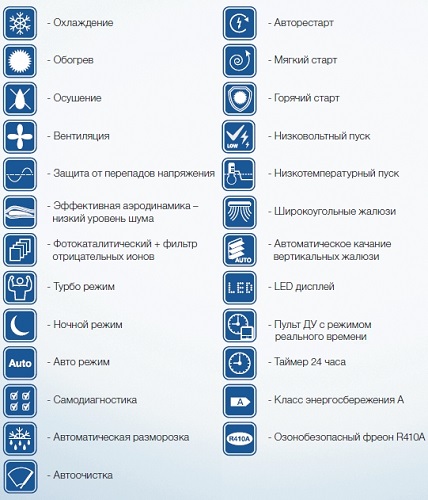
Explanation of device mode icons
The device is controlled by the remote control, however, window models have a button control panel.
The main modes:
- cool - cooling;
- turbo - maximum power flow;
- heat - heating;
- dry - drying;
- fan - ventilation;
- sleep - night mode;
- timer - timer;
- swing - changes the direction of the curtains;
- lock - lock;
- reset - reset settings;
- led - backlight on the remote.
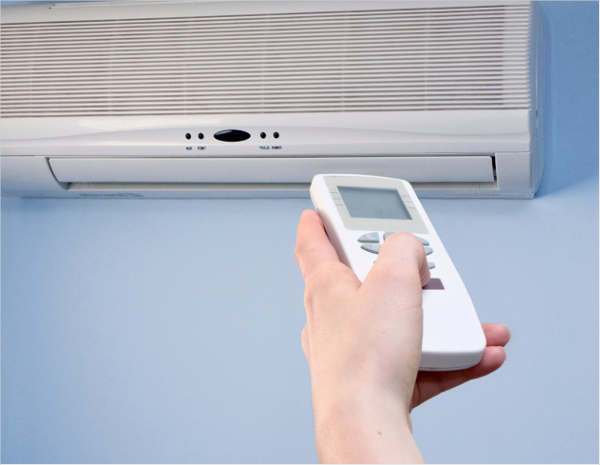
Management is carried out through the remote control
Additional features are not in every model. However, some of them are very interesting and useful during operation:
Additional device features
- Comfort setting helps you calculate the optimal temperature balance. The device will make the necessary settings and give the optimal result.
- Street dust is cleaned by means of coarse and fine air filters.
- 3D flow deflects airflow vertically. Some models "find" the remote control and direct airflows in its direction.
- Ionization saturates the room with ions with a negative charge, which positively affects the well-being of users.
- Defrosting the outdoor unit during low temperatures. Freon "collects" cold from street flows.
- Self-diagnosis will allow the device to determine the malfunction, eliminating further problems.
Additional features of the air conditioner The air conditioner can also work as a heater. When the refrigerant evaporates, it takes away heat (when a person with a high temperature is rubbed with alcohol, alcohol evaporates and the temperature drops). Conversely, when condensed, the refrigerant gives off heat. In heating mode, refrigerant condensation occurs in the heat exchanger of the indoor unit. So, with the help of electricity, heat is transferred from one medium to another. However, the device transfers 3 times more energy than is consumed. The principle of operation of the device for heat Note that operating the air conditioner as a heater is economically profitable: receiving 1 kW of electricity, the device brings about 3 kW of heat into the room, and does not allow the air to dry out. There are several simple rules for using the device: Seasonal prophylaxis, diagnostics and preventive maintenance should be mandatory and ongoing. Productivity of the device should correspond to the volume of the room. On the remote control from any model of air conditioner, there are five main buttons: How to set up the device for cooling: By setting the optimum temperature, the air conditioner can not be turned off at night. Manufacturers minimum cooling temperature is programmed in the region of 16-18 degrees of heat. The higher the temperature in the room, the warmer the flow from the device will be. Starting up, the device cools less, while accelerating - more. For 1 kW spent, the device produces up to 5 kW of chilled air. How to set up the appliance for heating: The device will not heat the room in the winter season if the temperature in it reaches the temperature indicated on the remote control. The air conditioner can also work as a heater This simple process has its own nuances. The concept of "turning off the air conditioner" includes three points: To disconnect the air conditioner from the power source, you need: To disable a working device, you need to: If you have to move, and specialists do not want to pay for dismantling, try to do it yourself: Dismantling the device There is such a situation when the device needs to be returned to the factory settings. There is a “Reset” button on the remote control; there is a small hole near this inscription. Putting a thin object such as a pin or a needle into it, you can reset all the settings to factory settings. If the remote control is not available in this one or it lacks such a function, you can simply remove the batteries from it for a while. After the batteries are put in place and the device is turned on, it will reset all settings to the factory settings. The “Reset” function is one of the additional functions of the device, which allows the device to resume the previous process after a pause in the operation of electricity. All modern air conditioners have a dehumidification mode in their arsenal. This mode can be used in conditions of excessive dampness of the room. It does not affect the temperature in the apartment either one way or the other. The cooling circuit helps the heat exchanger of the indoor unit to reach the lowest temperature. In this case, the fan rotates to a minimum. Thus, the greatest efficiency of the condensation process occurs. The device can easily remove from the area entrusted to it in one hour up to 2 liters of moisture, working both autonomously in the dehumidification mode and in pair with the cooling mode. This mode has maximum efficiency in wet rooms, not giving fungi and bacteria the slightest chance of reproduction and harm to human health. Drainage mode in the air conditioner When the “ventilation” mode is turned on, the air does not heat up, does not cool, it simply circulates evenly in the room, being cleaned along the way, with filters. The operation of the compressor and the outdoor fan is not required, only the indoor unit fan works. Thanks to this mode, the air throughout the room reaches complete uniformity. However, fresh air does not enter the room unless you open it for ventilation, for example, a window. Recently, supply and exhaust ventilation systems have appeared on the home appliance market, which can supply fresh air from the outside and remove exhaust air. The anion generator is located under the fan of the indoor unit. Its function is to generate negative ions (anions) due to high discharges between the electrodes of the generator through which air flows. The average number of produced anions ranges from 20 thousand per 1 cubic cm of air. The composition of such air is close in composition to forest. In 2-3 minutes, the ionization copes with the smell of cigarette smoke, and in 2 hours it saves the room from pathogens. The benefits of ionization are obvious: Conclusion: the ionization function is an extremely useful thing. Air conditioner ionizer In the bowels of the indoor unit, air flows pass through several degrees of purification. The more expensive the device, the more filters you can find in it. Filters in the air conditioner are as follows: Plasma Filter - How It Works Even if the dust, spores, bacteria and viruses contained in the air do not have a serious detrimental effect on human health, however, the optimal microclimate created by the air conditioner will make the owner's life much more pleasant. The efficiency of a device is understood to mean the efficiency of its operation, that is, the ratio of consumed and useful power. The power required by the device is three times less than the cooling power (a device with a power of 2.5 kW will consume 0.8 kW of electricity). This is normal since the appliance does not produce cold, but takes it outside. When used for heating, this coefficient is called S.O.R. (Coefficient of Performance) and shows the ratio of heating power to energy consumption: COP = Qheat/ Nrub When used in cold weather, this coefficient is called E.E.R. (Energy Efficiency Ratio) and shows the ratio of the power of the refrigerating capacity to the energy consumed: EER = Qcold / Ncons. The higher the EER or COP, the more efficient the instrument. Energy Efficiency Classification It can be seen from the illustration that the COP value is slightly higher than the EER indicator, because during operation the compressor heats up and gives off heat to the refrigerant. In the end, we can say that the air conditioner is efficient and economical both in the cooling process and in the heating process. But the device cannot be operated year-round. At an external temperature below -15 degrees, the operation of the device is not recommended, as it leads to premature wear and failure of the compressor. It so happens that a fuse has blown in the air conditioner. This can happen if there was a voltage drop, a thunderstorm with lightning, a short circuit, one of the elements of the power supply unit of the device failed. The fuse is a consumable item, you can try to replace it with your own hands. If you decide to replace the fuse yourself, you should look into the circuit of the internal and external units - it is there, on the electronic circuit boards, that the fuses are located. The purpose of the fuse is to protect the electronic board from fatal overload, accidents and fire caused by a power surge. Inside his capsule of glass or ceramic is a wire designed for a voltage of a certain value. If the voltage exceeds a reasonable limit, the wire melts and the electrical circuit is interrupted. It should be borne in mind that replacing a failed consumable with a new one, but not eliminating the cause of what happened, you risk damaging not only the new fuse, but also the device itself. Electronic circuit board, fuse on it This device has both advantages and disadvantages. Benefits: Disadvantages: Choosing a high-quality air conditioner and operating it correctly, you can minimize the disadvantages of the device. The air conditioner will create an optimal microclimate in the room Sometimes the remote control from the air conditioner may get lost or the batteries just run out, which brings a lot of inconvenience to the user's life. A smartphone, as a rule, is always at hand. Manufacturers of split systems decided to combine business with pleasure, and make it possible to control the air conditioning using a smartphone or tablet. For this we need: The controller, mounted on the wall and connected to a power source, sends commands to the air conditioner via wireless channels (Wi-fi, IR). The signal scale is up to 8 meters. Next, you need to download and run an application suitable for the OS (Airpatrol, IR Universal Remot, etc.) and follow the further instructions. Through control from a smartphone, a person can use the following functions: What the application can inform: Managing a device from a smartphone Let us compare several of the most popular models of different manufacturing companies according to the characteristics that have the greatest weight when choosing a device. Power consumption cooling / heating antibacterial deodorant catechin with vitamin C antibacterial antifungal photocatalytic anti formaldehyde fine filter deodorizing bactericidal air IAQ automatic mode selection timer inverter control night mode automatic restart self-diagnosis automatic mode selection timer night mode automatic restart I Feel (remote control with temperature sensor) The easiest method for selecting an air conditioning system is to seek help from a specialist in the selection and installation of a device. If for some reason this is not possible, you should turn to our tip: The technical data sheet of the device indicates the area for which the device is most suitable. In summer, the voltage in the network decreases significantly, that is, does not correspond to the indicator for which the air conditioner is designed. As a result, the device simply burns out after a while. Add here the likelihood of a summer thunderstorm, construction and welding work nearby - all this leads to unstable operation of the device. Exit - installation of a voltage stabilizer for air conditioners. With it, the processor and compressor will be protected from power surges. To choose a stabilizer: Suppose the device’s power is 1700 watts, the compressor consumes 1400 watts, cosφ is 0.85. Do not forget that during the startup of the device, the power increases 3 times: 1700 ÷ 0.85 = 2000 watts. 2000 + 3 × (1400 ÷ 0.85) = 6930 watts. Bottom line: for an air conditioner of such power, a stabilizer with a minimum power of 7.0 kW is needed. Do not forget about the power reserve from 10 to 30%. Power conditioner for air conditioner The Climatic semi-automatic system is designed to maintain an optimal microclimate in a car using a single-zone system. The device is connected to the ventilation and heating system and configured through the control panel. Depending on the set mode, the cabin is filled with cold or hot air. The temperature is set by the regulator, the signal from which is supplied to the control unit. When the temperature in the cabin reaches the set, the air conditioner turns off. By changing the position of the recirculation flap, the Climatic system takes either outside air or from a car dealership. 4 sensors regulate temperature. In the “recirculation” mode, air is not supplied from the outside, only salon air is supplied through the air conditioner. In this mode, car windows may sweat. When operating the Climatic system, all windows and hatches must be closed. The climate system provides not only the convenience of passengers, but also the safety of the driver. Climatic Climate System The compressor is the main element of the climate system. Its purpose is to compress freon and pump it through the climate system. The compressor selects the freon vapor from the evaporator and sends it to the condenser. In some climate systems, the compressor is the only moving mechanism. The compressor separates the circuits with high (discharge) and low (suction) pressure due to the presence of a plate valve. A compressor is the most complex and expensive mechanism of a climate system. If it fails, the motorist will have a lot of trouble to repair, so it is important to prevent its breakdown. The air conditioning system controls the clutch according to the needs of the system itself. An electromagnetic clutch is included in the compressor and is responsible for disconnecting it with the drive pulley, which is necessary in some cases, for example, turning off the air conditioner. Electromagnetic clutch operation Everyone sees the ideal air conditioning in different ways: for someone design is important, for someone an abundance of modes and functions or quiet operation. To choose the best option, pay attention to all the information about the device, so you won’t be disappointed later.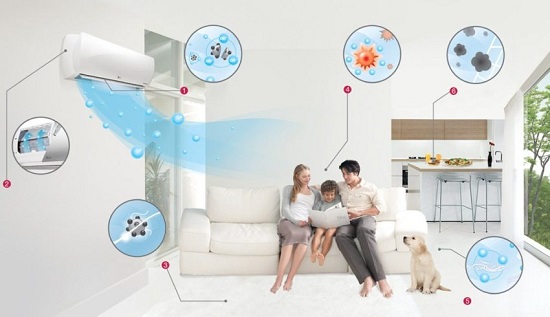
How air conditioning works on heat
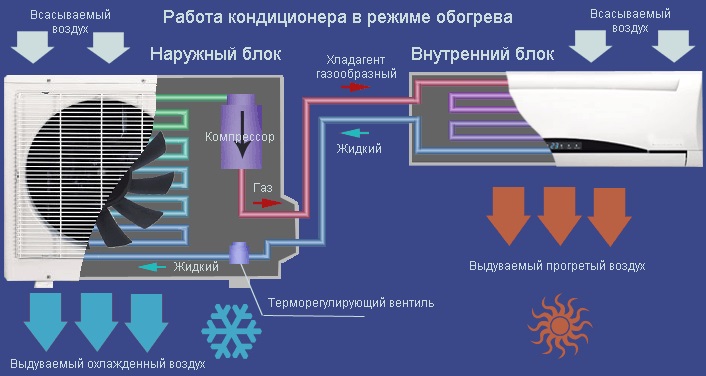
How to use air conditioning in an apartment
Setting the air conditioner
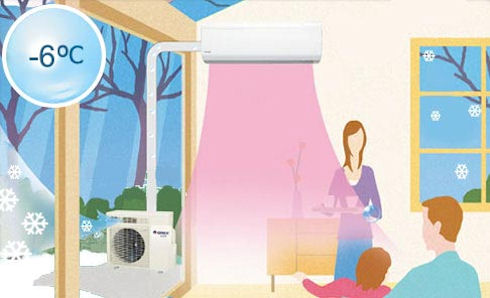
How to turn off and restart the air conditioner
Instrument disassembly

Drainage mode in the air conditioner
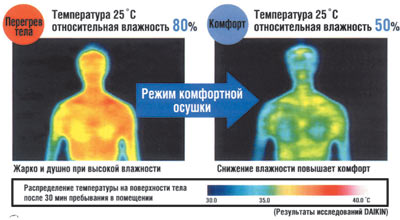
Ventilation mode in the air conditioner
Anion generator in the air conditioner what is it?

Air conditioning filtration system

Air conditioner efficiency
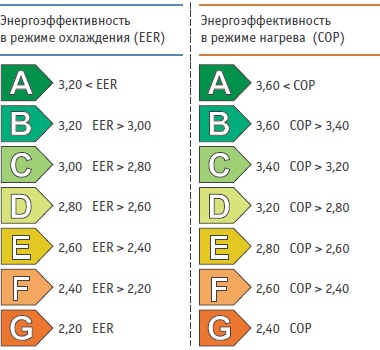
Where is the air conditioner fuse
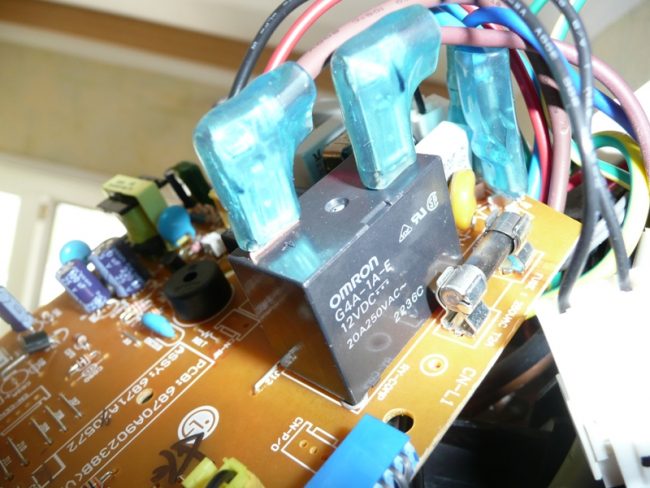
Air conditioning: its advantages and disadvantages

Can I control the air conditioning from the phone?
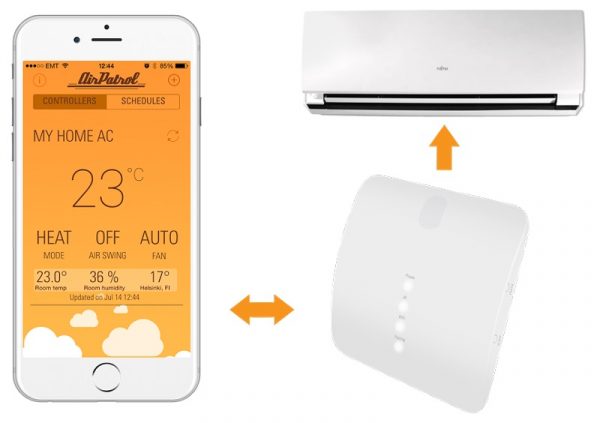
Comparative characteristics of the most popular models of air conditioners
Model Panasonic CS / CU-E12PKDW Ballu BSE-07HN1 Electrolux EACS-07HAT / N3 Daikin FTXB20C / RXB20C Toshiba RAS-10N3KV-E / RAS-10N3AV-E Price 46 900 rubles 12 740 rubles 16 790 rubles 42 800 rubles 30 740 rubles Area 35 m² 20 m² 20 m² 20 m² 25 m² 905/1090 W 660/610 W 684/645 W 510/600 W 750/860 W Power in cooling mode 3,500 watts 2100 watts 2200 watts 2000 watts 2500 W Power in heating mode 4400 watts 2200 watts 2340 watts 2500 W 3200 watts Noise level 42/21 dB 53/38 dB 28 dB 39/21 dB 40/26 dB Filters titanium-apatite photocatalytic Functions ventilation mode (without cooling and heating), automatic maintenance of temperature, self-diagnosis of malfunctions, night mode, drainage ventilation mode (without cooling and heating), automatic temperature maintenance, self-diagnosis of malfunctions, night mode ventilation mode (without cooling and heating), automatic temperature maintenance, self-diagnosis of malfunctions, night mode How to choose a conditioner for a house by its area
Power conditioner for air conditioner

Air conditioning in the car
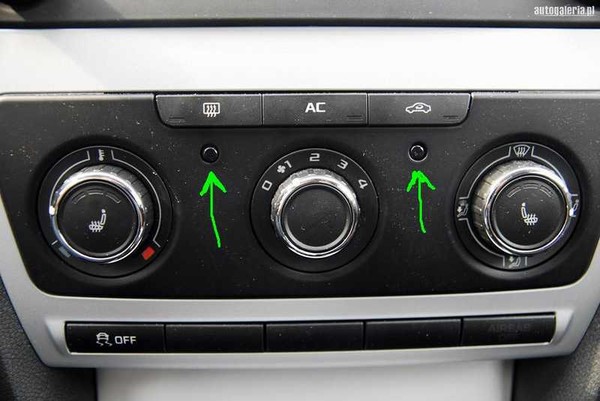
Car air compressor
